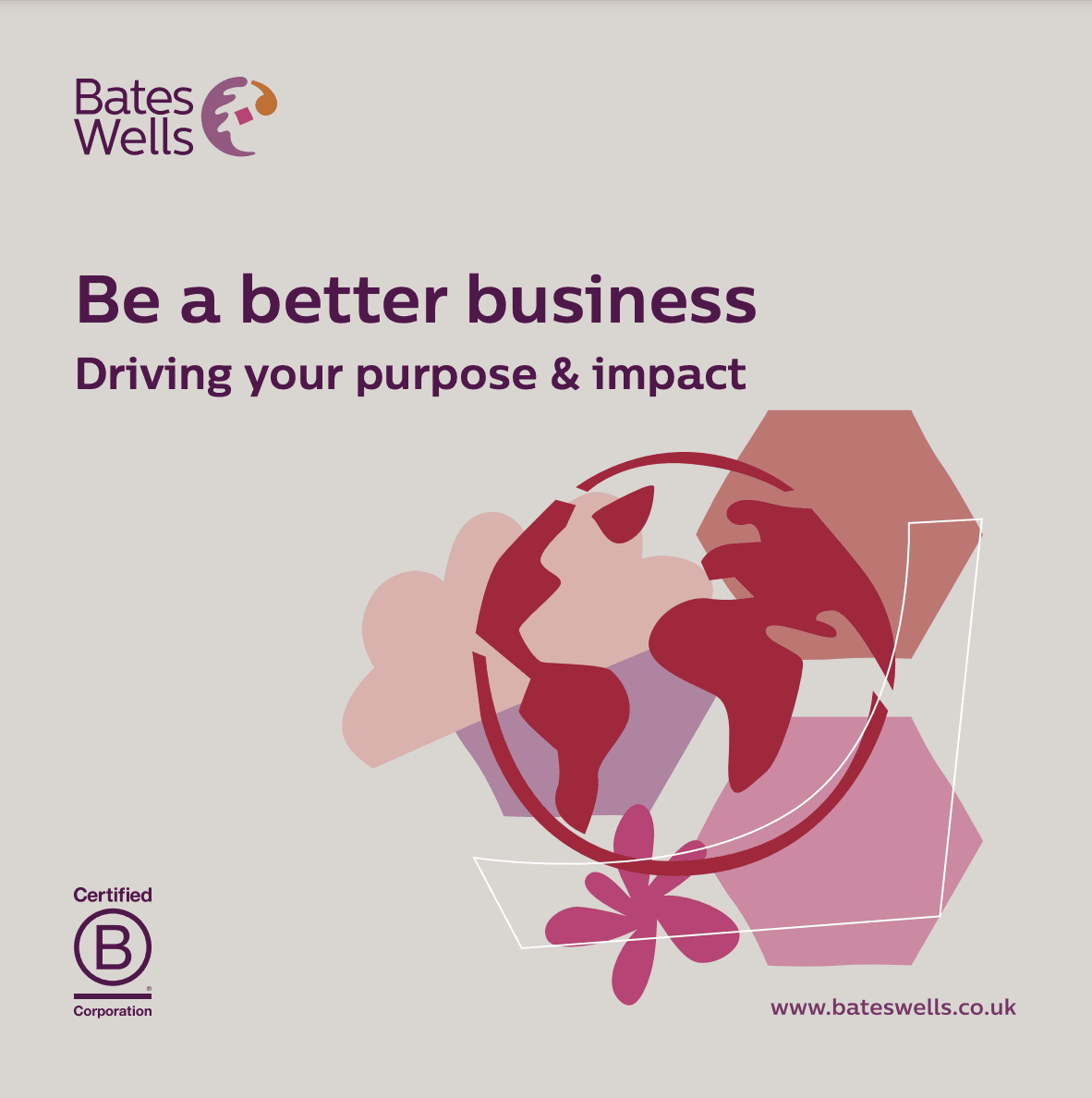
Over the course of working with 100+ clients, Seismic has formed invaluable relationships with a number of other force-for-good businesses with special expertise helping businesses on their impact journeys. This blog was written by Bates Wells, the first Certified B Corp law firm in the UK and one of Seismic’s close partners. In it, Bates Wells shed light on the topic of Impact Governance, a decision-making framework which can help businesses enable more impact.
It’s not always clear how boards can authentically integrate social and environmental impact into their governance strategy, to help the business live out its purpose beyond profit. Below, we share our thoughts on how an ‘Impact Governance’ approach can help.
What is Impact Governance and how can it enable more impact across your business?
Impact Governance refers to a framework for decision-making that enables the implementation of the business’ purpose-beyond-profit across the organisation.
While listed and large businesses are required by regulation to have certain formal governance measures in place, many other businesses are subject to less rigorous compliance requirements. However, governance measures that are proportionate to the size and complexity of the business are essential to enable the board to pursue the business’ purpose.
For a purpose-driven business, this is about more than profit – your business is working to have a positive impact on society and the planet through the way it does business and its products/services.
Bates Wells has published a guide on Impact Governance for purpose-driven businesses, in which we share practical ideas and helpful questions for the board to ask itself, under 7 key areas. Below, we share some highlights from the guide. It’s worth noting that Impact Governance is not about creating an extra layer of work but weaving social and environmental performance into existing good governance practices.
Start with strong legal foundations that support purpose
The business’ legal structure and constitution help shape the lens for decision-making by the directors. Wherever the business is now, you may wish to periodically review your legal structure, including your group structure if applicable, and explore the different mechanisms available to facilitate and protect your corporate purpose in the long term.
- Does the business’ legal structure enable the board to weigh material factors and make trade-offs where required to adhere to the business’ values and purpose, and prioritise long-term sustainability over short-term demands as needed?
- Does it attract the right kind of investors, who align with your purpose and your long-term sustainability outlook, and show your customers that you are serious about your purpose beyond profit?
- Will it protect your purpose during organisational change, such as changes in ownership and leadership?
Your business’ constitution can also help you shape the board of directors to ensure the representation of key stakeholders. For example, UK sustainable beauty brand Faith In Nature amended its articles so that the board will include at least one director with the requisite experience to represent Nature and ensure the board gives due consideration to the environmental impact of the company’s decisions.
Driving culture with purpose
For your business’ purpose to succeed, your people within the organisation need to believe in it. This requires purpose alignment throughout the business, starting at the top. The board sets the framework for the behaviours expected. This might include using tools such as a code of ethical business conduct, and the board may want to scrutinise purpose alignment across key areas of company strategy, such as its approach to taxation, any lobbying activities, and capital allocation.
It can be difficult for boards to read and understand the culture of the business, and whether it is aligned with purpose. Simple measures can help, such as observing how people refer to the business’ purpose in their conversations and decision-making. Formal measures might include conducting an internal ‘purpose audit’, to identify any misalignment such as in marketing or workforce relations. Check whether there is a safe space for anyone to report conduct that is contrary to the business’ values and purpose, and how this is meaningfully escalated.
Consider whether the business treats the promotion of equity, diversity and inclusion (EDI) as a subset of the business’ impact goals, or whether it is being embedded into the business’ culture. Consider the board’s strategy for developing and maintaining board and organisational diversity, and ensuring that decision-making represents a range of stakeholders. Is progress in this area a standing item on the board’s agenda? Does it monitor progress by collecting and reviewing data on recruitment and retention rates, promotions and pay gaps? How do EDI goals inform stakeholder engagement?

Engaging meaningfully with people and planet
Stakeholders across the organisation need to understand the business’ purpose, so they can work towards its commercial and impact goals. Board delegation strategy, company policies, and the approach taken to communications and training, particularly for managers, can all support the business’ purpose-beyond-profit to cascade through the governance structure. For example, consider how impact goals feature in all committees’ terms of reference, in job descriptions, performance management processes and incentives, and in workforce training.
Stakeholder engagement is a two-way process, supported by an appropriate level of transparency and the meaningful inclusion in decision-making of the feedback received. Increasingly, internal and external stakeholders expect higher standards of business with regard to ESG factors. Businesses that can respond constructively to society’s expectations may be better positioned to take advantage of the changing landscape.
- Has the business conducted materiality assessments to identify its key stakeholders? What tools does it use to talk with its stakeholders? Could a stakeholder advisory group help the business with any blind spots in its understanding of stakeholder impact – e.g., the necessary balance between current and future generations?
- Are there measures in place to ensure the flow of data on stakeholder views back up to the board for consideration, on a regular basis?
- How does the business promote transparency with stakeholders – what information is shared about its commercial and impact goals, its stakeholder engagement processes, and how stakeholder input informs decision-making
- How does the business’ stakeholder engagement work inform succession planning for leadership?
There’s no standing still if you want to walk the talk
Purpose-driven businesses seek to push the envelope to improve the impact we have on our wider stakeholders. This means we are likely to want to continuously strive to develop our governance practices to support positive impact creation.
Bates Wells works with different kinds of purpose-driven businesses, including B Corps, social enterprises, employee-owned businesses, and more. We help our clients to lock in their social and environmental impact commitments, explore innovative ownership structures for a long-term sustainability outlook, and meet the B Corp constitutional requirements, tailoring to the business’ goals and investor profile. You can read more in our Be a Better Business Handbook.
Please get in touch to find out how we can help your business review and develop its governance practices. www.bateswells.co.uk


